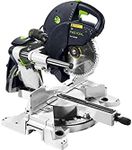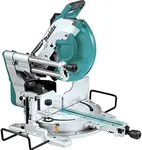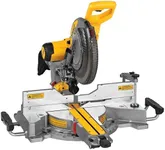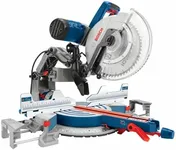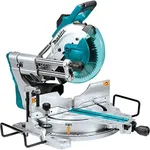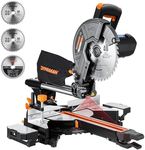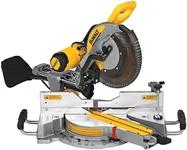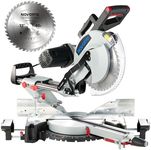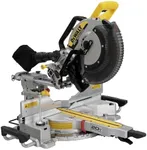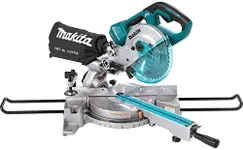Buying Guide for the Best Miter Saws
When you're in the market for a miter saw, it's important to match the tool's features with the kind of projects you plan to tackle. Miter saws are prized for making precise angled cuts in wood, trim, and other materials, making them essential for jobs like framing, molding, and woodworking. Before buying, consider the types of cuts you’ll make, the materials you typically work with, and how much workspace you have. By understanding the key features and how they relate to your needs, you can choose a miter saw that will help your projects go more smoothly and efficiently.Blade SizeBlade size refers to the diameter of the saw blade, usually measured in inches. This is important because it determines the maximum width and thickness of material you can cut in a single pass. The most common blade sizes are 8, 10, and 12 inches. Smaller blades are great for more detailed or lighter work, like small trim or crafts. Larger blades let you cut wider and thicker lumber, which is useful for framing or handling large moldings. Pick a blade size that matches the largest type of material you’ll typically cut—if it's mostly trim, a smaller blade could be enough, but if you work with big boards, go larger.
Type (Standard, Compound, Sliding, Dual-Bevel)There are four main types of miter saws: standard, compound, sliding, and dual-bevel. Standard miter saws are best for straightforward angle cuts. Compound miter saws add the ability to tilt for beveled cuts, so they're helpful for crown molding or complex trim work. Sliding miter saws include rails that let the blade move forward and backward, letting you cut wider boards. Dual-bevel models tilt both left and right for complex compound cuts without flipping the workpiece. Consider what cuts you need to make most often: for basic cuts, a standard saw is fine; trim and molding favor compound and dual-bevel options; wide boards need a sliding version.
Cutting CapacityCutting capacity describes the maximum width and thickness a miter saw can handle in a single cut, affected by both blade size and saw design. Higher capacity means you can cut bigger boards or thicker materials, which is essential if you often work with large lumber. For basic or home projects, standard capacities may be sufficient, while professionals or those cutting fence posts, beams, or wide trim may want a saw with a larger maximum crosscut.
Miter and Bevel RangeThe miter range tells you how far the saw can rotate left and right to make angled cuts, while the bevel range shows how much it tilts for sloped cuts. Saws with wider ranges offer more flexibility, useful for advanced carpentry or decorative work. Think about the angles you routinely need: straightforward construction may need only standard angles, while fancy trim or art projects may require greater flexibility.
Laser Guide/LED Work LightSome miter saws have built-in laser guides or LED work lights, helping you line up cuts more precisely. These features can be helpful if you often work indoors, in low light, or need to make lots of perfect cuts. If accuracy is a top priority or you want to make fewer mistakes, look for a saw with these guides. If you’re comfortable marking cuts by hand or work in bright conditions, you may not need them.
Dust CollectionDust collection refers to how well the saw handles sawdust created during cutting. Good dust collection systems help keep your workspace cleaner and protect your lungs. Some saws come with bags or ports for vacuum attachments. If you work indoors, care about health, or like a tidy area, prioritize models with effective dust management. Outdoor or rough work may need less attention to this feature.
Portability and WeightThe size and weight of the miter saw affect how easily you can move or transport it. If you plan to use your saw on different job sites, or even move it around your house, lighter and more portable models will be easier to handle. If the saw will stay in one place in a workshop, weight is less important. Consider how much you'll need to move the saw and choose accordingly.
